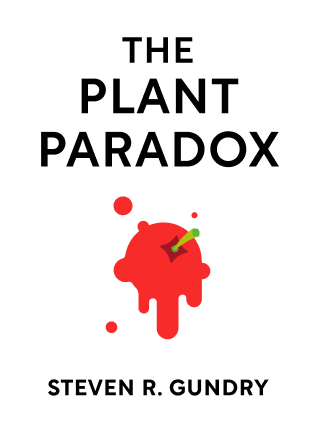

This article is an excerpt from the Shortform summary of "The Plant Paradox" by Steven R. Gundry. Shortform has the world's best summaries of books you should be reading.
Like this article? Sign up for a free trial here .
What is a low-lectin diet? How do low-lectin foods boost health?
A low-lectin diet is an opportunity to boost your health. You focus on the right kinds of foods and avoid ones that wreak havoc.
See how a low-lectin diet can help you lose weight and be healthier.
What Does a Low-Lectin Diet Do?
A low-lectin diet is designed to counteract all this by eliminating lectins and disruptors and focusing on foods that nourish your good microbes to keep you at a healthy weight and keep diseases at bay.
The low-lectin diet of the PPP is based on four rules.
- What you don’t eat makes a bigger impact than what you do eat. Of course, eating low-lectin foods is still important, but the biggest results will come from eliminating lectin-heavy foods and allowing your gut to heal.
- Take care of your gut microbes and they’ll take care of you. Your microbes are key to keeping you healthy; they help you digest and get nutrients from food, they assist your immune system, they help control hormones and appetite, and they keep bad microbes at bay. To allow them to do their jobs, you need to eliminate the antibiotics, antacids, NSAIDs, and processed foods that kill off your ecosystem of microbes. The effects of a low-lectin diet are boosted by building these habits as well.
- Your body processes fruit like candy. Remember that any time your body detects sweetness (even if it’s fruit or sugar-free artificial sweeteners), it reacts the same way—by storing fat. There are only a few fruits that won’t have this effect:
- Unripe bananas
- Unripe mangoes
- Unripe papayas
- Avocados
- You are what you eat—and what the thing you’re eating ate. In other words, when you eat meat, you’re also eating whatever that livestock was fed, and that’s often corn and soy.
Why Follow a Low-Lectin Diet?
Lectins and LPSs make your immune system wage war against foreign invaders; in order to fight the war on lectins, your body needs its soldiers—white blood cells—to be well fed, so it diverts calories from your muscles and brain and stores it as fat (fuel) for your white blood cells. Additionally, your body makes you hungrier so you’ll ingest more calories to fuel the battle.
In limited amounts, the toxins in lectins put a mild strain on your immune system and cells, which ultimately strengthens it. (Shortform note: This is similar to the way vaccines work.) A widely varied diet has major health benefits by exposing you to smaller amounts of many different types of nutrients and lectins; our ancestors evolved as a traveling species, and thus ate a huge variety of plants through their travels.
Certain lectins teach your immune system to resist pneumonia and other viruses, while others curb the growth of the HIV virus. Still others can have healing properties, and some lectins may even have the potential to treat cancer (Shortform note: Research for this is ongoing).
It’s only when you have too many of the same lectins in your system that your body’s natural functions start to go awry.
Understanding Lectins
Lectins are large proteins contained in the seeds, grains, skins, rinds, and leaves of most plants (gluten is a type of lectin). Lectins have several harmful effects in your body, which we’ll explore in more detail in the upcoming sections and chapters.
- Lectins can create gaps in your intestinal wall barrier.
- Lectins that breach your intestinal wall trigger an attack from your immune system, causing inflammation.
- Lectins—sometimes called “sticky proteins”—bind to sugar molecules in your body and interrupt the communication between cells.
- Lectins mimic other proteins, fooling the body into taking unnecessary actions like storing fat and attacking certain cells.
- Lectins help viruses and bacteria attach to their intended targets, so that people who are particularly sensitive to lectins are more susceptible to viral and bacterial infections.
Everyone has different sensitivities to lectins; if your ancestors ate a certain plant, your immune system and microbiome have evolved to better tolerate that lectin.
What Can I Eat on a Low-Lectin Diet?
Here are the foods you’ll cut down on or cut out entirely, to be replaced by low-lectin foods:
- Eliminate major lectins, including grains, legumes, corn, and soybeans
- Eliminate most saturated fats, including whole-grain foods
- Eliminate sugars (including fruit) and artificial sweeteners
- Eliminate industrial farm-raised and free-range poultry and livestock, as well as farm-raised fish
- Eliminate crops sprayed with Roundup
- Eliminate GMO foods
- Avoid all endocrine-disrupting products
- Reduce omega-6 fats
Here’s what you’ll eat:
- All leafy greens
- Certain vegetables
- Tubers and other resistant starches
- Omega-3 fats, including fish oil, perilla oil, flaxseed oil, avocado oil, walnut oil, olive oil, and macadamia nut oil
- No more than 8 ounces of animal protein a day, typically from wild-caught fish and shellfish as well as eggs from pastured chickens
- No more than 4 ounces of your daily protein should come from grass-fed or pasture-raised meat
- A small serving of nuts, guacamole, or half a Hass avocado for a snack
- Limited dairy products from specific cow breeds or from sheep, goats, and water buffalo

———End of Preview———
Like what you just read? Read the rest of the world's best summary of Steven R. Gundry's "The Plant Paradox" at Shortform .
Here's what you'll find in our full The Plant Paradox summary :
- Why eating more vegetables isn't enough, and why some vegetables are toxic to your body
- The science behind lectins and how they tear apart your body, making you fat and sick
- The 6-week program to get your body back on healthy grack






